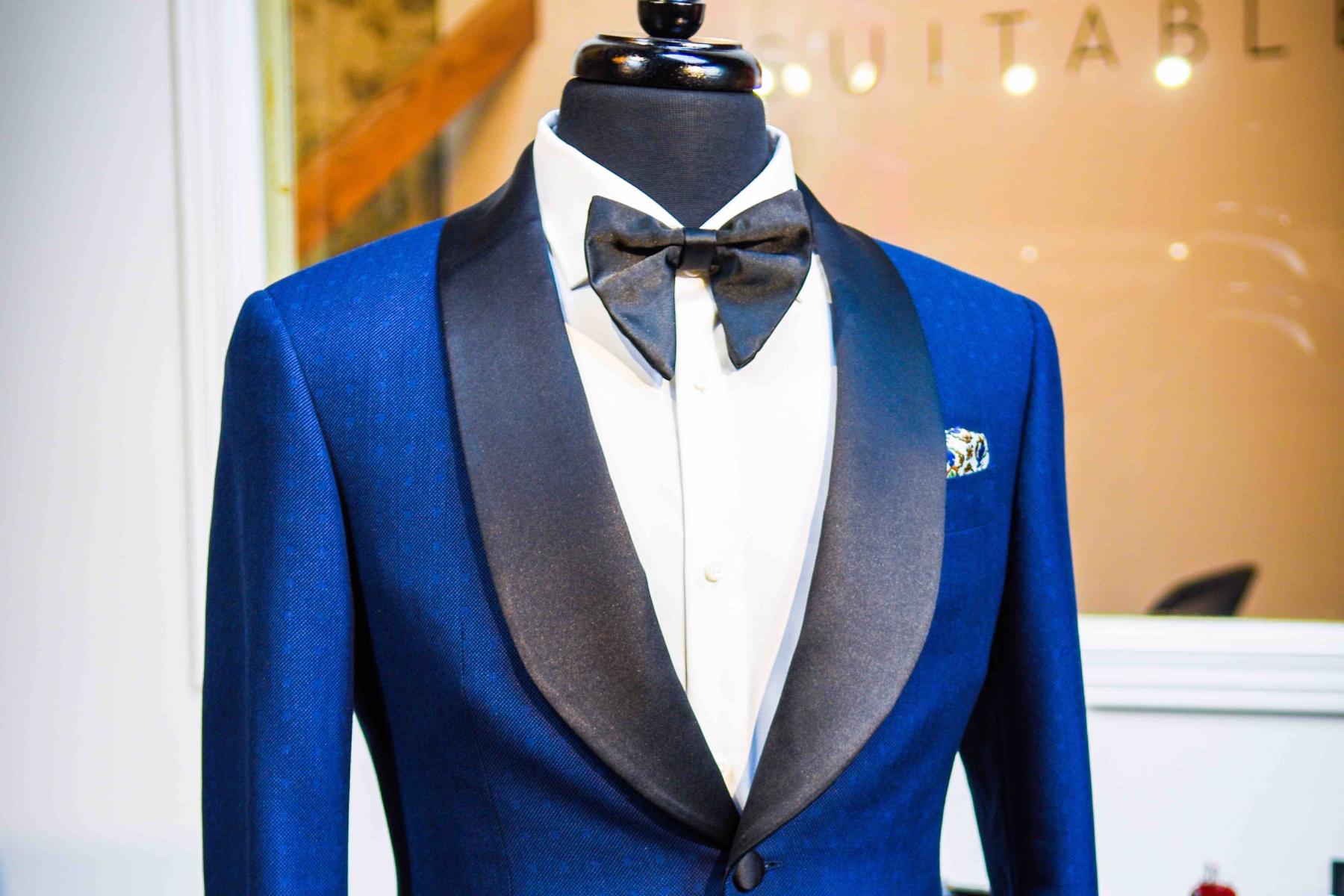-
MENSWEAR
-
Questions?
Schedule Appointment Schedule Virtual Consultation
Talk to us on our Live Chat or call us at 1-855-979-SUIT(7848)
-
-
WOMENSWEAR
-
Questions?
Schedule Appointment Schedule Virtual Consultation
Talk to us on our Live Chat or call us at 1-855-979-SUIT(7848)
-
-
DESIGN
-
Questions?
Schedule Appointment Schedule Virtual Consultation
Talk to us on our Live Chat or call us at 1-855-979-SUIT(7848)
-
-
SHOWROOMS
-
Questions?
Schedule Appointment Schedule Virtual Consultation
Talk to us on our Live Chat or call us at 1-855-979-SUIT(7848)
-
- Book Appointment
Toggle Nav


Search
Skip to Content
- FAST DELIVERY
- CUSTOM MADE
- PREMIUM FABRICS
-
MENSWEAR
-
![Suitablee header menu image]()
Questions?
Schedule Appointment Schedule Virtual Consultation
Talk to us on our Live Chat or call us at 1-855-979-SUIT(7848)
-
-
WOMENSWEAR
-
![Suitablee header menu image]()
Questions?
Schedule Appointment Schedule Virtual Consultation
Talk to us on our Live Chat or call us at 1-855-979-SUIT(7848)
-
-
DESIGN
-
![Suitablee header menu image]()
Questions?
Schedule Appointment Schedule Virtual Consultation
Talk to us on our Live Chat or call us at 1-855-979-SUIT(7848)
-
-
ACCESSORIES
-
SHOWROOMS
-
![Suitablee header menu image]()
Questions?
Schedule Appointment Schedule Virtual Consultation
Talk to us on our Live Chat or call us at 1-855-979-SUIT(7848)
-
- Book Appointment
- Pricing
- WEDDINGS
- BUSINESS
- GIFT CARDS
OUR FIT GUARANTEE!
YOUR FIRST PURCHASE? NO WORRIES!
The majority of our customers find their initial purchase to be a perfect fit. Our advanced algorithms and Artificial Intelligence, refined by thousands of diverse body types in our database, ensure a tailored fit with a 95% success rate. Whether you opt for self-measurement or use our Automatic Sizing Technology, rest assured of a near-perfect fit.
OUR FIT GUARANTEE POLICY ENSURES A HASSLE-FREE PURCHASE:
- 1. Need alterations? Simply visit your local tailor, snap a picture of the receipt, and send it to us. We'll provide a store credit or refund (up to $100 per suit).
- 2. Collaborate with our team. If alterations aren't feasible, SUITABLEE will remake your first order to meet your sizing specifications.
-
MENSWEAR
-
Questions?
Schedule Appointment Schedule Virtual Consultation
Talk to us on our Live Chat or call us at 1-855-979-SUIT(7848)
-
-
WOMENSWEAR
-
Questions?
Schedule Appointment Schedule Virtual Consultation
Talk to us on our Live Chat or call us at 1-855-979-SUIT(7848)
-
-
DESIGN
-
Questions?
Schedule Appointment Schedule Virtual Consultation
Talk to us on our Live Chat or call us at 1-855-979-SUIT(7848)
-
-
SHOWROOMS
-
Questions?
Schedule Appointment Schedule Virtual Consultation
Talk to us on our Live Chat or call us at 1-855-979-SUIT(7848)
-
- Book Appointment

The Different Types of Ties | Custom Suits Made Easy.
Neck ties are synonymous with suits, work, and good presentation. Ties give outfits their final touch... tying the look together so to speak. They come in a great variety of materials, prints, textures and styles. There is truly a tie for everyone. Let’s have a look at the different types of ties out there, see what the differences are, and take a moment to appreciate the craftsmanship that goes into making them.
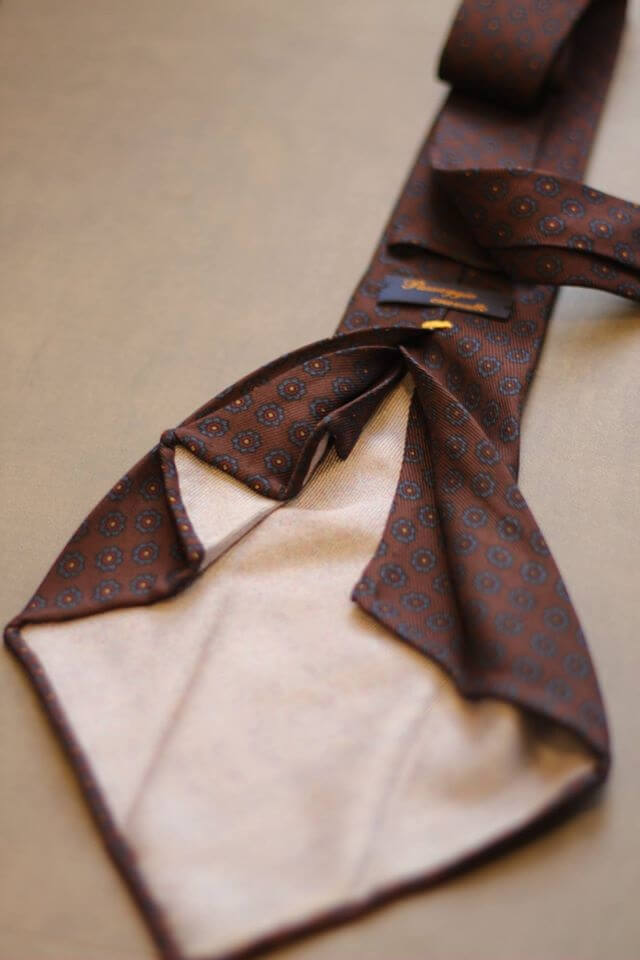
The History of Ties
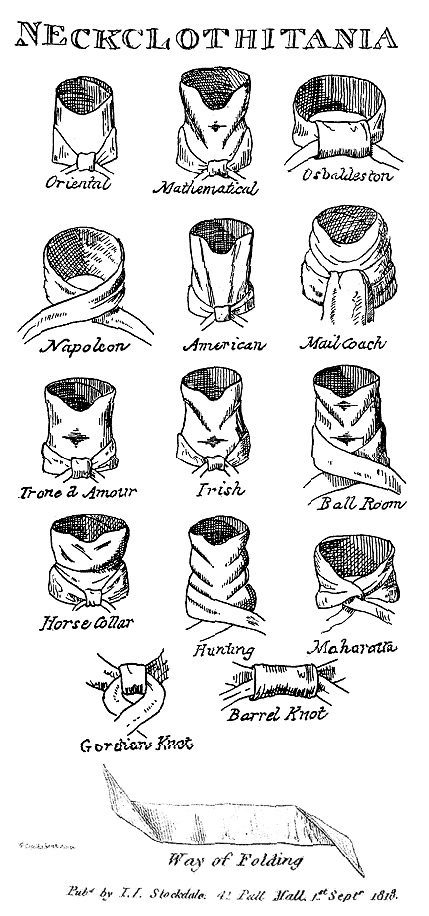
Our story begins in the 17th century, during the Thirty Years’ War. King Louis XIII hired Croatian soldiers to fight in his militia. Their uniforms included a piece of cloth tied around their necks and Louis loved the look! He named the tied cloth “cravate”, and they remained in fashion hence forth. Then, in the 1920s, a New York tie maker revolutionized the world of neckwear. Enter Jesse Langsdorf. He patented a new way of cutting fabric on an angle and then sewing three segments of it. This type of neckwear laid flat and retained its shape. Enter: the modern tie.
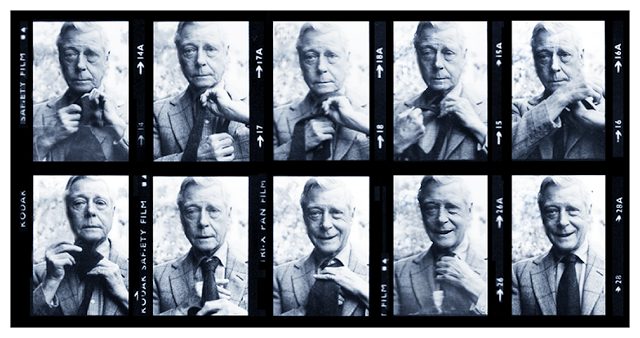
In the 1930s we see the appearance of the Windsor knot, created by the Duke of Windsor in 1936. The duke preferred an extra-wide knot and initially had ties specially made from a thicker cloth. Eventually though, he opted to invent a whole new knot that could create that larger look with normal cloth. The 1940s saw the era of wide ties, and the 1950s that of skinny ties, with the two styles going in and out of fashion over time.
Different Types of Tie Materials

Style aside, there are many different types of ties, all depending on how they’re made. Silk, polyester, wool, wool blends, acetate, rayon, nylon, cotton, linen, and ramie are the most common tie materials. The most luxurious tie material is silk, shortly followed by wool and acetate. The cheapest tie material is polyester.
The Different Types of Ties

The simplest and cheapest way of sewing a necktie involves cutting the fabric, rolling it up, and sewing it at the seam into a tube. This method provides a flimsy structure, so ties made this way are usually less durable and tend to lose their shape easily. It's also difficult to make a nice knot with such ties.
Folded ties are of far better quality, especially if they are handmade. Three fold ties are folded thrice and usually have a lining. A tie inlay is usually made of wool, cotton, or silk. Cheaper materials, such as polyester, are sometimes used but they usually wrinkle inside. If this is the case it will ruin the look of the tie over time. For this reason, it is important to choose ties that have a good quality canvas. Five fold, seven fold, and nine fold ties are folded respectively five times, seven times, and nine times. These folded ties don’t have any canvassing in them. Instead, the additional folded material serves as the inlay.
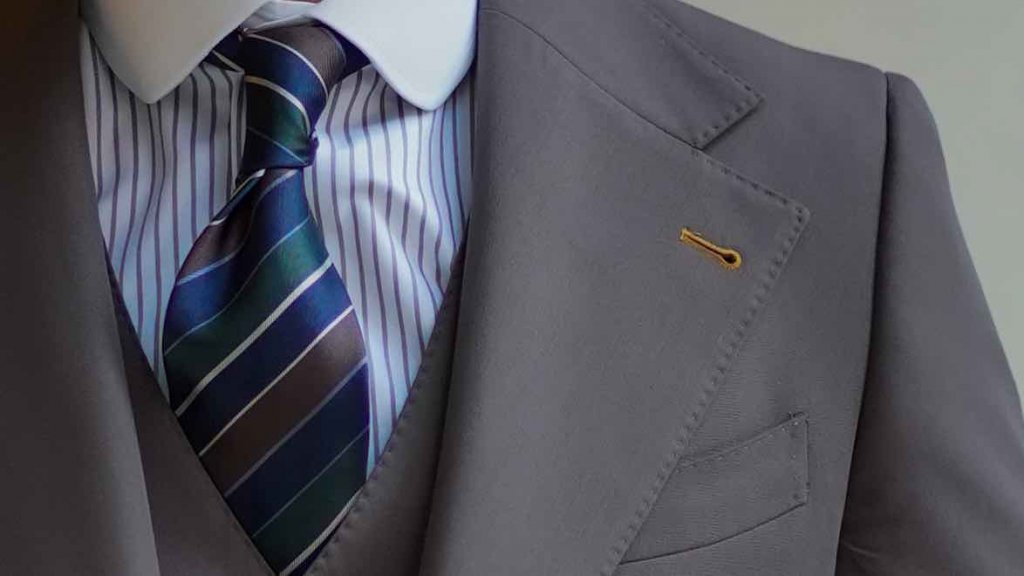
On a large scale, the first step in making a tie is to spread 40-yard bolts of cloth on a cutting table. Cutting the outer fabric should be done by an experienced hand to increase the number of ties cut from the piece of cloth used. All ties are cut diagonally, otherwise known as cutting on a bias. The reason is that it allows fabrics some give. If the fabric has a panel pattern, such as stripes, the fabric is stacked according to the pattern.
With that said, start or expand your tie collection with a gained appreciation of the craftsmanship that goes behind making them, and with the knowledge that will help you choose which ones to get, and which ones to avoid.










